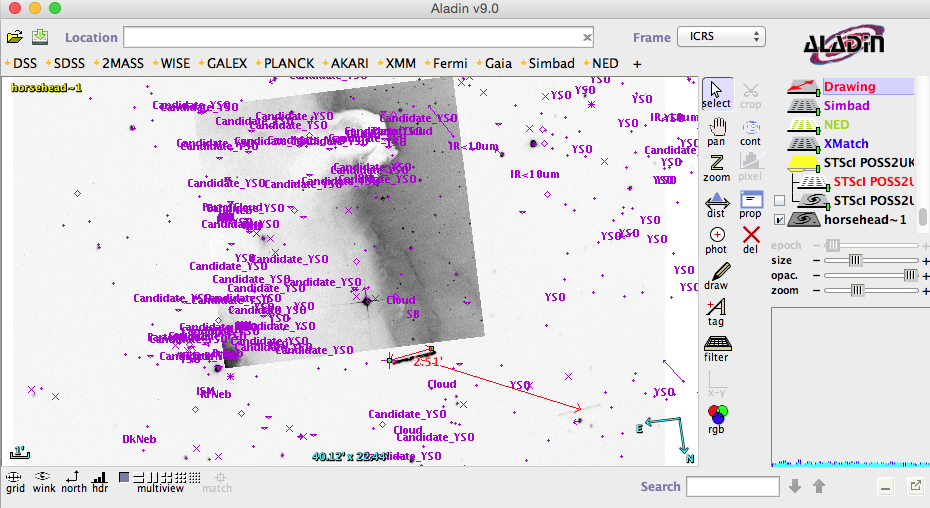Discussion
Discussion
The End of Kepler – It’s not over yet but it will happen soon.

The Kepler space telescope, which was launched in March 2009, is the tenth NASA Discovery mission and the first dedicated to searching for and studying exoplanets. It was scheduled to operate for about four years, but is still active almost a decade later and after its scientific objectives changed when it was renamed the K2 mission. Despite these tremendous successes, scientists are now concerned about the health of the spacecraft, and a team of engineers and astronomers are working together in hopes of extending the spacecraft’s data-gathering capabilities for as long as possible.
In May 2013, loss of a second reaction... read more ❯
Capturing a Snapshot of Pluto’s Atmosphere. The Story of an Occultation

Last Tuesday night, a large number of amateur and professional astronomers located across Mexico, the US, and Canada took advantage of a rare and exciting opportunity: observe a blinking star while Pluto occulted it. In Southern California, the SETI Institute, the Observatoire de Paris, Unistellar, and Oceanside Photo and Telescope (OPT), one of the largest telescope retailers in the world, collaborated to observe this rare event and gather the precious data we need to understand Pluto’s atmosphere and climate. Here is our story.
Like most events in the world of modern astronomy, this one started with an email.
In February 2018, I... read more ❯
Intriguing pair of satellites caught with the eVscope

If you often look at the evening dark sky in a clear area far away from the city, you have probably seen a speck of light which moves with respect to the star, that's probably a distant satellite that shines because it reflects the light of the sun at high altitude. According to NASA's Orbital Debris Program office, there are an about 21,000 large debris (>10 cm) and satellites orbiting around Earth right now, so much more than you can see with your naked eye.
The eVscope is designed to pinpoint and image Deep Sky Objects (nebulae, galaxies), but we have already shown its... read more ❯
Starfest in Central Park: Urban Astronomy for All

Last week I traveled from San Francisco to New York City to attend Autumn Starfest, which is sponsored by the Amateur Astronomers Association (AAA) of New York. This star party’s most amazing feature is its location—right in the middle of Manhattan, in the magnificent Central Park! And after flying 2,600 miles (4,100 km), I was eager to show attendees that the Unistellar eVscope will let them see faint targets in the night sky—even the sky of this immense city, with all of its light and other forms of pollution.
And the great news is that the event, and our telescope, were a huge success.
[caption... read more ❯
How to explain the inconceivable

I am often asked to comment on what happened in Paris last December since I have both French and American citizenships and I live in the US. Like a lot of my compatriotes, it has been difficult to watch those events unfold on Friday afternoon December 13 (I was working at George Mason University in DC ). Since then, he has been also impossible to rationalize what really happened and to give a sense on those horrific events. Today I listened to "Geopolitique", a short program aired on France Inter which described events and their consequences in the geopolitical scale. Bernard Guetta summarized very well what are my thoughts on... read more ❯
Happy New Year to the Planet!
I decided to do something new to start the New Year. I translated a podcast from a program called Geopolitics on France Inter written by Anthony Bellanger. You can listen to the original French version here.
I like the text since it is quite optimistic and it summarizes the progresses that we have made over the past 50 years. The world is not perfect yet, but it is indeed a better place.
Are there any reasons to wish people a Happy New Year 2015?
I believe there are many and would like to explain why.
First: our health. Never have so many people all over the world been... read more ❯
House Hearings Fail to Tap NASA's Full Potential
Yesterday the U.S. House of Representatives Subcommittee on Space held a hearing entitled "Exploring Our Solar System: The ASTEROIDS Act as a Key Step Planetary science". I was curious about this act and expected the hearing to focus on interesting new ways to motivate private companies to design, launch, and operate space missions, and further the study of our Solar System.
The five witnesses chosen to testify included a NASA civil servant, three well-known planetary scientists and one... read more ❯
54 years of space exploration: an updated map that you must see
National Geographic asked 5W Infographics to update its 50 Years of Exploration graphic, a classic that I use often in my talks to illustrate our space exploration program and its focus on the inner part of the solar system.
The updated version, renamed "Cosmic Journey", is spectacular, better organized and easier to follow than its predecessor. It has been updated to include new missions sent over the past 4 years. The new color code includes the paths of failed, as well as successful, missions and also the nation that led them.
Cosmic Journey by Sean McNaughton, Samuel Velasco,... read more ❯
Surprising discovery: a ring around an asteroid
Some may say that our universe is full of beauty, others argue that it is our solar system that surprises us the most, but ultimately I will say that it is the world of small solar system bodies which is strikingly full of diversity. Today's announcement of the discovery of rings around the Centaur Chariklo by an international team of astronomers is a vivid proof that small solar system bodies have not yet revealed all their secrets.
My recent work has made me realize that asteroids (also called small solar system bodies or minor planets) are in fact real mini-geological worlds.... read more ❯
The Next Step in Exoplanetary Science: Imaging New Worlds
In 2003, I was lucky enough to be part of a small group of astronomers that met at the University of California at Berkeley to brainstorm on an innovative idea: the design of an instrument to image and characterize planets around other stars, called exoplanets, using a telescope in the 8 – 10 meter class. A decade later, such an instrument became reality with the arrival of the Gemini Planet Imager (called also GPI, or “Gee-pie”) instrument at the Gemini South telescope in Chile.
Five known planetary systems imaged with current adaptive optics systems. Fomalhaut shown on... read more ❯
